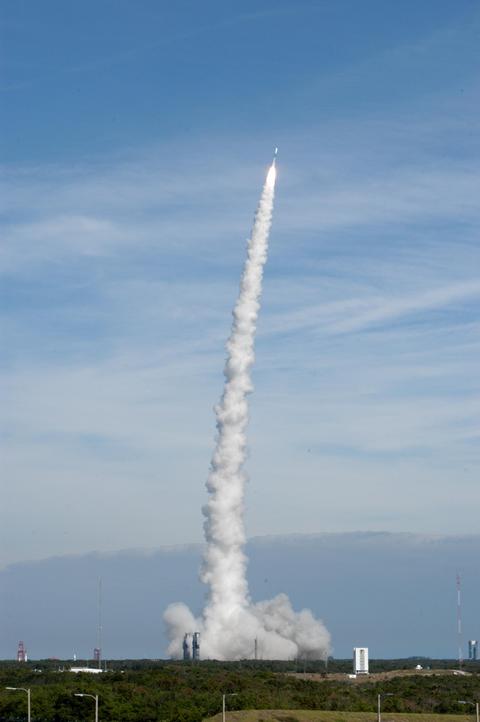Credit & Copyright: NASA
Explanation:
Where do
gamma ray bursts occur?
To help find out, NASA launched the
Swift satellite on Saturday, as
pictured above.
What Swift is designed to do better than any previous
satellite is to quickly locate these
enigmatic explosions
in both sky position and distance.
Once a gamma ray burst (GRB) is located,
Swift itself will rotate to face it head-on and
determine its distance directly.
Swift locations will be immediately beamed down to Earth-based telescopes operating around the world and
across the electromagnetic spectrum
that are just waiting for a place on the sky to point.
Subsequently collected GRB and
afterglow information will help
astronomers not only determine the nature of the initial explosions,
but also the nature of the expanding shockwaves.
Some Swift-located GRBs could turn out to be the
most distant transient events ever detected,
holding unique clues to the nature and rate of the very
first wave of star formation
in the early universe.
1999 2000 2001 2002 2003 2004 2005 2006 2007 2008 2009 2010 2011 2012 2013 2014 2015 2016 2017 2018 2019 2020 2021 2022 2023 2024 2025 |
Январь Февраль Март Апрель Май Июнь Июль Август Сентябрь Октябрь Ноябрь Декабрь |
NASA Web Site Statements, Warnings, and Disclaimers
NASA Official: Jay Norris. Specific rights apply.
A service of: LHEA at NASA / GSFC
& Michigan Tech. U.
|
Публикации с ключевыми словами:
Swift - запуск - launch
Публикации со словами: Swift - запуск - launch | |
См. также:
Все публикации на ту же тему >> | |
